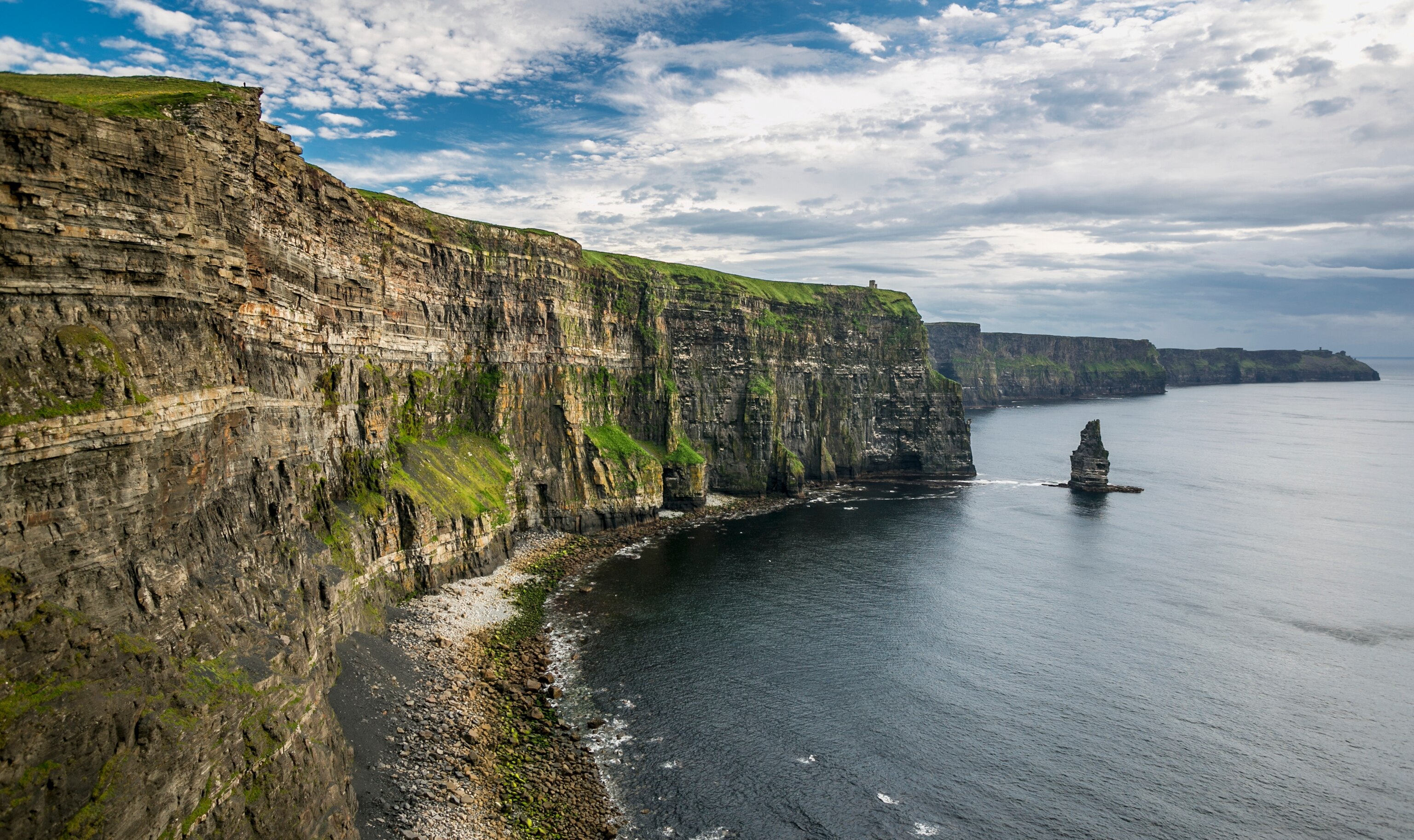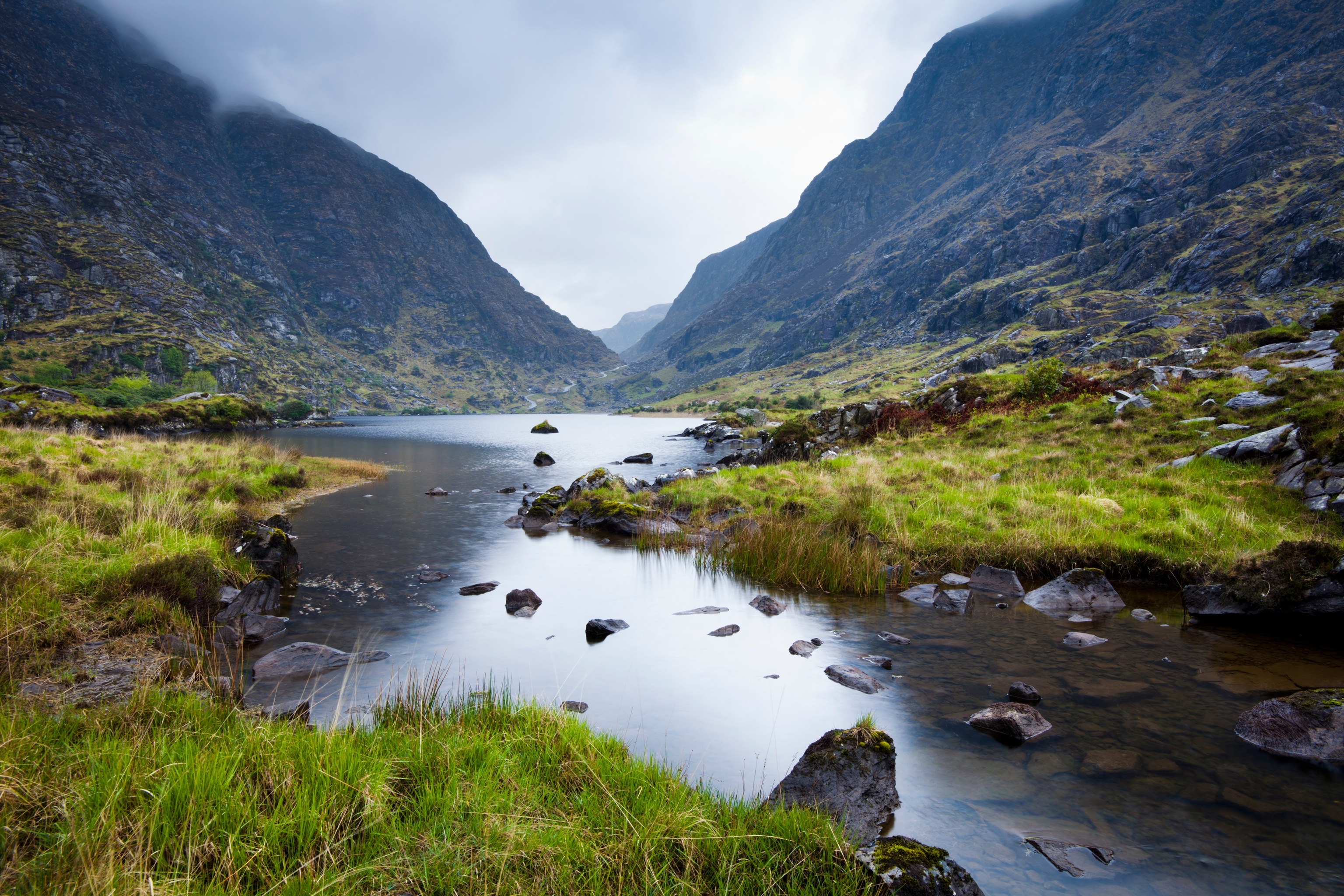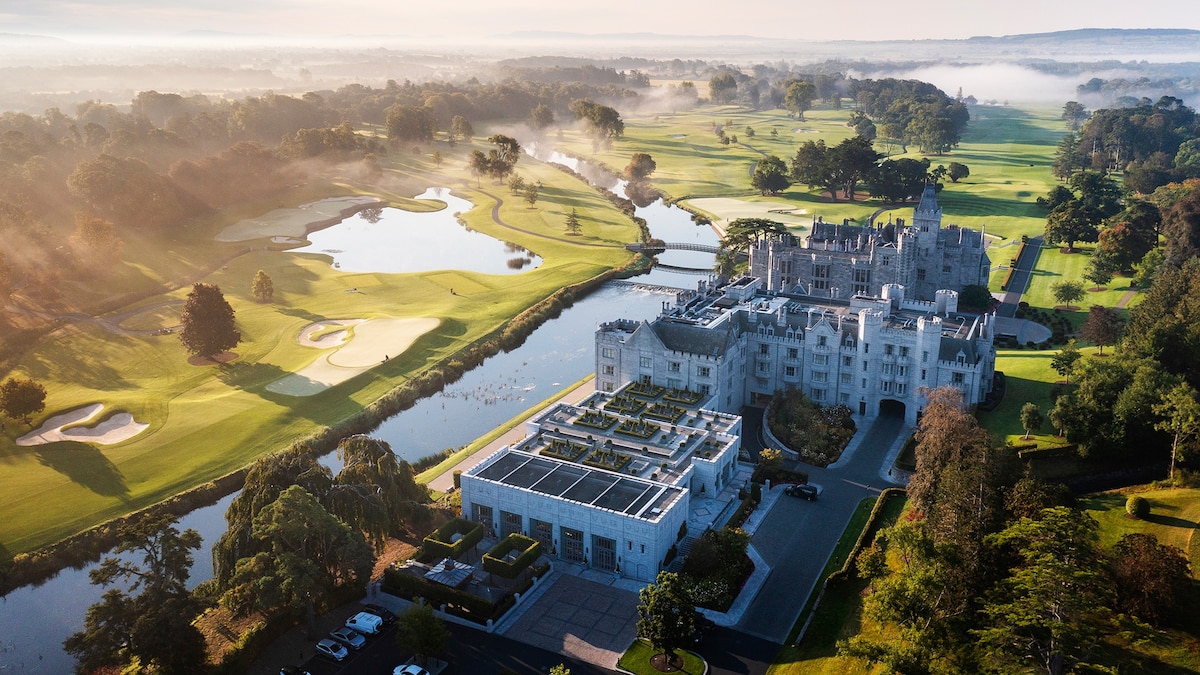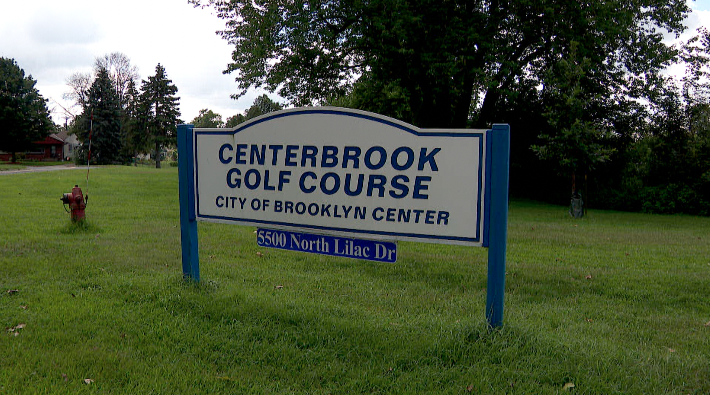From craggy coastlines and historical monuments to traditional music and cosy pubs, there’s much to explore in Ireland. Its western counties are particularly striking, where visitors can enjoy a booming restaurant scene — driven by local farmers and chefs — alongside iconic landmarks such as the rugged Cliffs of Moher and the formidable Gap of Dunloe.
Avid golfers will already be aware that the 2027 Ryder Cup (13-19 September) will take place at Adare Manor in County Limerick, and what better reason to embark on a road trip through the beautiful west of Ireland? Discover some of the island’s most intriguing places on an iconic coastal route dotted with world-renowned links and landmarks, starting in Galway on the west coast and ending in Cork on the south coast.
Galway
Spend a couple of days exploring the city of Galway — particularly the Latin Quarter, with its narrow lanes soundtracked by buskers. After browsing the locally made pottery, wool, and jewellery stocked in the neighbourhood’s artisan craft shops, settle in at one of the pubs or cafes that line the car-free streets, whose outdoor terraces are great for people-watching.
The city is known for its creative food scene, so walk across the River Corrib for a breakfast burrito with roast sweet potato, eggs and avocado at Urban Grind, or tuck into fish fingers with kimchi slaw at Kai.
Work it off with a refreshing sea dip at Salthill, a small seaside resort just over a mile west of Galway city centre. Hang your hat up at The House Hotel, which is a stone’s throw from Nimmo’s Pier — the perfect spot to sit and watch the sun set.
Don’t miss: Traditional music in the city’s pubs. Both Tig Cóilí and The Crane have nightly sessions.

The Cliffs of Moher area has been designated a Special Protection Area for Birds due to the significant numbers of guillemot, razorbill, puffin and fulmars.
Photograph by Atlantide Phototravel, Getty Images
County Clare
While the five-mile-long ribbon of rock at the Cliffs of Moher looks impressive from the clifftop viewing paths, the 700ft bluff is even more astounding when seen from a cruise on the steely waters of the Atlantic.
Next, enjoy some time pottering along the limestone paths of The Burren. You’ll find some of County Clare’s greatest natural treasures among this unique karst landscape, including rare flowers and plants, an underground network of caves, ancient fortresses like Dysert O’Dea Castle and Neolithic monuments such as the Poulnabrone dolmen. Rest your head at Gregans Castle, whose restaurant uses fresh produce sourced both from its own organic garden and from local food producers. Elsewhere, Dromoland Castle, set on 500 acres of parkland, boasts its own championship golf course.
Don’t miss: Take a boat trip to Scattery Island, in the Shannon Estuary, where a guided tour will tell you the history of the sixth-century former monastic site with its round tower and churches. Take a picnic and explore the uninhabited island after the tour.
Limerick and Adare
Next up is Limerick City — Ireland’s third largest, where you’ll find the 13th-century King John’s Castle. Perched on the banks of the River Shannon, this mighty fortress witnessed many sieges and battles — a history told through the interactive exhibitions within. If you’re in the city on a Saturday, treat yourself to samples of farmhouse cheeses, crepes, pies and coffee at the Milk Market, which has been running since 1852.
If golf is on the menu, make your way south west from Limerick to the historic village of Adare, where you can stay and play at the 2027 Ryder Cup venue, Adare Manor. During the spring-summer season (which usually runs from April until early August), guests of this luxury resort can enjoy exclusive access to the course, which has been recently revamped by golf architect Tom Fazio.
Take a break from the greens in Adare village, best known for its collection of picture-perfect thatched cottages, with plenty of craft and antique shops to browse along the way. One of these is home to the cosy 1826 Adare restaurant, which combines the region’s best meats and seafood with other top-notch seasonal ingredients. To explore beyond the village, go for a gentle rural cycle along the 25-mile Limerick Greenway, following the disused Limerick to Kerry railway line from Rathkeale to Abbeyfeale.
Don’t miss: Foynes Flying Boat and Maritime Museum — it has a full-size replica of a B314 flying boat, a flight simulator, a Maureen O’Hara exhibition and the Irish Coffee Centre, so there’s plenty to see and do.

Forged by glacial flows, the Gap of Dunloe in County Kerry is an approximately 11km mountain pass running between the MacGillycuddy Reeks and Purple Mountain.
Photograph by Jorg Greuel, Getty Images
County Kerry and Kenmare Bay
Head next to Ireland’s southwest corner for wild and rugged coastal scenery. The town of Killarney is the gateway to some of the county’s best natural sights, such as the Gap of Dunloe mountain pass and Killarney National Park. Within the park you’ll find its three lakes, the 111-mile Ring of Kerry drive and the quiet village of Kenmare, which sits in sheltered Kenmare Bay. There’s a lively food scene, too — take the Kenmare Foodie tour for an introduction — plus craft shops and galleries to nose through. Take to the waters and you might spot seals, otters and seabirds — you can opt for a boat tour of Kenmare Bay or take a night kayaking trip to paddle under the stars. Visit Killarney Golf & Fishing Club in central County Kerry to indulge in a round of golf overlooking the calm waters of Lough Leane.
Don’t miss: Base yourself at a luxury hideaway like Sheen Falls Lodge or the Park Hotel Kenmare. Both offer country walks, cosy spa escapes and tranquil breakfasts or afternoon teas overlooking Kenmare Bay.
County Cork
Drive along West Cork’s coast — home to the Beara Peninsula, Mizen Head and the Sheep’s Head Peninsula — for cliffs, beaches, lighthouses and coastal villages. If you’ve time, take a ferry to Sherkin Island or Cape Clear. County Cork offers some of the Wild Atlantic Way’s most rugged seascapes, which you can enjoy both from cliff-top viewpoints and from the waters below; secluded beach strolls, boat trips and kayak sessions are all good options. Local highlights include Bantry House on Bantry Bay, which also serves as a B&B; the gardens at Garinish Island near Glengarriff; and colourful harbour villages like Schull, Baltimore and Glandore.
Don’t miss: Mizen Head Signal Station — perched on a rock and accessible by footbridge, it offers dizzying views down to the rocks below and out to Fastnet Rock, and houses an exhibition about local wildlife and Fastnet Lighthouse history.

Kinsale, in County Cork, is a popular destination that’s well-known for its colourful streets, picturesque harbour, vibrant culinary scene and proximity to the Wild Atlantic Way.
Photograph by Chris Hill, Getty Images
Kinsale
This colourful harbour town has gained a reputation for its many excellent restaurants, all supplied by the larder of County Cork. Check out Michelin-starred Bastion for a tasting menu showcasing the best regional produce, or the intimate dining room at Saint Francis Provisions for Mediterranean-inspired sharing plates and wines.
Work up an appetite during the day by exploring the star-shaped Charles Fort. Located just outside the town, it was built in the 1670s and has impressive sea views. Take a harbour cruise to see the fort from the water — looking out for local wildlife like seals — before spending time pottering around Kinsale’s winding streets. If you’re staying longer than two days, stop off at the Kinsale Pottery and Arts Centre to try your hand at the potter’s wheel.
Don’t miss: A memorable round of golf at Old Head Golf Links, set on a 220-acre promontory looking out to the Atlantic and surrounded by rugged rocks and cliffs. Nine of its holes are dotted along the clifftops and all 18 have incredible views.
Plan your tripFor the west of Ireland, fly to Shannon Airport, Kerry Airport, Ireland West Knock Airport or Donegal Airport and for the south coast, fly to Cork Airport. Dublin Airport in the east is also a viable option. Visitors can travel from their chosen airport in a rental car. You can also take your own car on a ferry from Great Britain to Dublin or Rosslare with Stena Line or Irish Ferries. On arrival in Ireland, there are plenty of public transport options available with train and bus connections to Cork, Kerry, Limerick and Galway with Irish Rail and Bus Eireann.
The continuation of the Common Travel Area (CTA) means British and Irish citizens can travel between Great Britain and the island of Ireland without a passport or visa restrictions, subject to ID requirements from the travel provider. For more information, visit ireland.comThis paid content article was created for Ryder Cup Europe as a joint initiative with Tourism Ireland. It does not necessarily reflect the views of National Geographic, National Geographic Traveller (UK) or their editorial staffs.
To subscribe to National Geographic Traveller (UK) magazine click here (available in select countries only).







